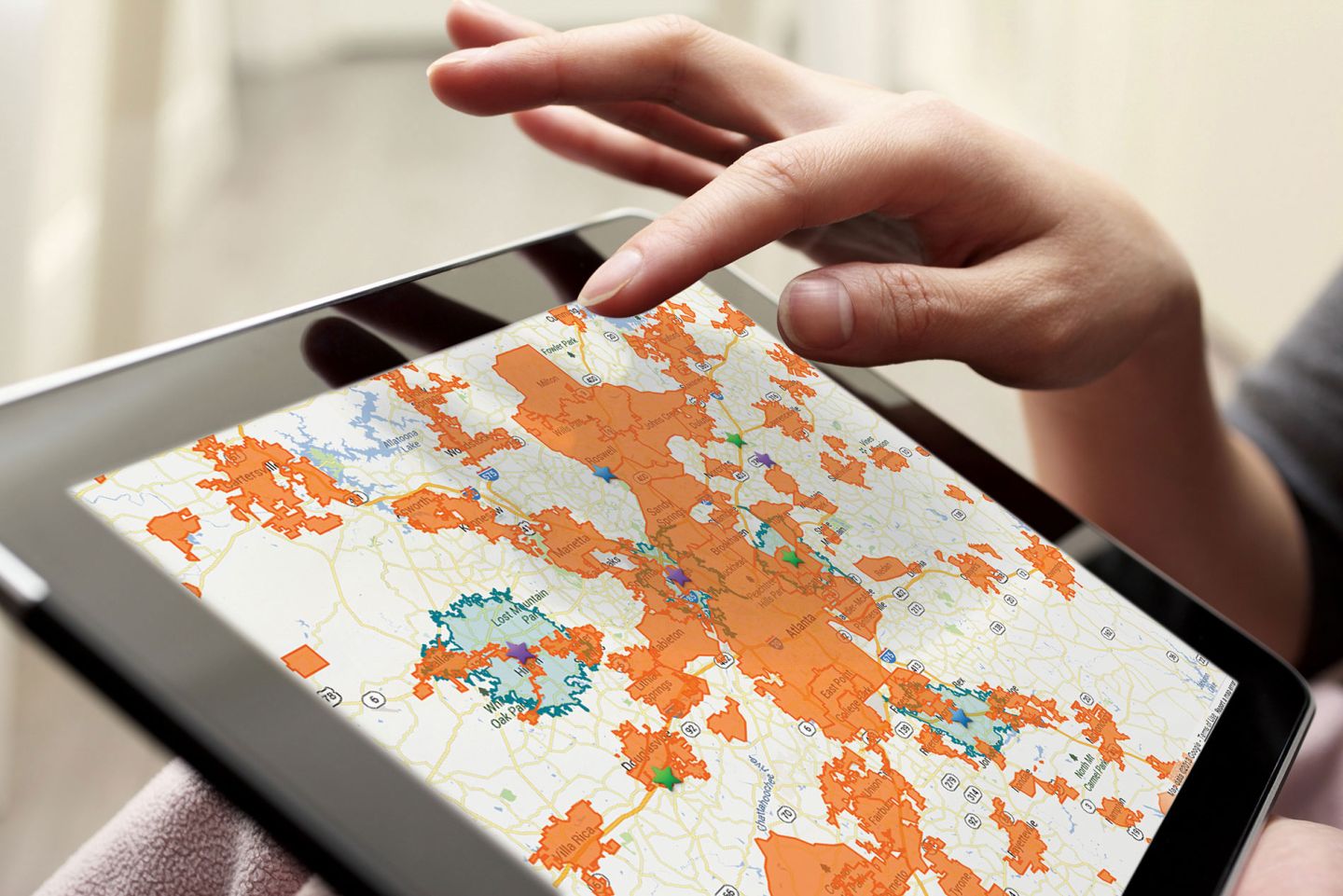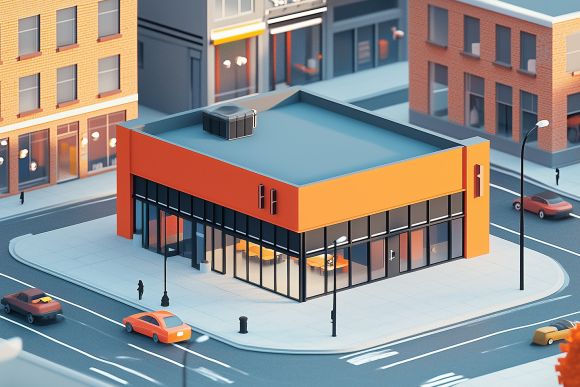Consumer demands for convenience are putting pressure on the retail, restaurant, and healthcare industries to adapt.
With more and more consumers preferring to travel shorter distances and turning to online channels, real estate and marketing decisions need to be refitted for the convenience-driven consumer, and a trade area analysis can help.
Where Trade Areas Fit In
A trade area is more than a map—it represents the geographic region around a location where most of your customers live and work. By defining the boundaries of these regions, businesses can better understand each location’s potential and make data-driven adjustments to meet evolving consumer demands.
Why does this matter? Accurately defining trade areas helps you to assess the probability of success when evaluating a future location. It also shows you which parts of the market to focus on when evaluating competitive threats to current locations or when deploying local marketing campaigns.
Related: Leverage Your Retail Trade Area’s Potential
Do You Know Your Trade Area?
For most businesses, understanding consumer behavior starts with one key fact: 80% of disposable income is spent within 20 miles of home. However, this general rule, often referred to as the “80/20 metric,” no longer accurately reflects consumer shopping behavior. The reality of how far consumers are willing to travel is even more concentrated. A recent study found that 93% of consumers typically travel no more than 20 minutes for everyday purchases, and 87% won’t go beyond 15 minutes. At Buxton, we’ve defined the average drive time trade area for thousands of brands and found that even within a category there can be variation in how far consumers travel.
These statistics may seem daunting, but they also highlight a significant opportunity. If brick-and-mortar establishments understand who their best customers are, where more of those customers can be found, and how far they’re willing to drive for your particular brand, the potential for growth remains strong.
Importance of a Trade Area Analysis
A trade area analysis is a critical tool for businesses navigating the complexities of shifting consumer behaviors. As online shopping grows and convenience becomes paramount, understanding your trade area is essential for making informed decisions that align with customer expectations and market dynamics.
Key benefits of trade area analysis include:
- Informed site selection to identify the most strategic locations and better understand the market forces you will face after opening a new location.
- Competitive intelligence to understand which competitors impact each of your locations.
- Localized marketing that targets the right neighborhoods to reach the consumers most likely to visit a specific location.
- Supply chain and inventory planning to align resources with actual demand.
- Strategic growth opportunities by identifying underserved markets.
Without a comprehensive trade area analysis, businesses risk misunderstanding their customer base, missing key opportunities, and falling behind competitors. By leveraging this data, companies can design strategies that drive growth, maximize returns, and position themselves for long-term success.
Related: How the CRE Industry Should Evaluate Trade Areas
How to Define Your Trade Area
Defining your trade area is essential for understanding where your customers come from and how to optimize operations, marketing, and site selection strategies. There are two primary ways to define a trade area:
- Capturing the Majority of Customers: This method defines a trade area based on observed visitor patterns, typically using mobile data. By analyzing the distance that captures the majority of actual visitors, businesses can establish a data-driven view of their geographic reach.
- Focusing on Core Customers: Instead of looking at all visitors, this approach defines the trade area based on where core customers live and work. By identifying and mapping high-value customer locations, businesses can refine their marketing and expansion strategies to target areas with the strongest potential for long-term growth.
Each approach offers valuable insights, and regardless of which approach you take, a complete trade area analysis will often categorize the market into three tiers:
- Primary Trade Area: This is the most critical region, often producing 50–80% of a store’s sales or visits. It represents your most frequent and valuable customers who are highly likely to shop at or visit your location.
- Secondary Trade Area: Contributing an additional 15–20% of sales or visits, this area includes moderately frequent customers. While less loyal, they are still a significant part of your customer base.
- Tertiary Trade Area: Often referred to as the "fringe" area, this encompasses all remaining sales or visits. Customers in this zone tend to shop less frequently, often influenced by specific needs, promotions, or special occasions.
Understanding these tiers is critical because customer value decays with distance; the farther a consumer is from your location, the less likely they are to shop with you. This insight enables targeted strategies to maximize ROI.
Consumer behaviors and market conditions change over time, so your trade area analysis should be revisited regularly. By keeping your customer profiles and trade area insights up to date on an annual basis, you ensure your strategies remain aligned with shifting patterns and evolving consumer needs.
Factors That Affect Trade Areas
Several factors influence how a trade area functions and how businesses should adapt their strategies to maximize success:
- Demographics and Psychographics: The population’s age, income, and lifestyle preferences shape consumer behavior and purchasing patterns, impacting demand and spending potential within the trade area.
- Urban Density and Traffic: High-density urban markets often require a hyper-localized approach, as congestion and limited travel distances lead to smaller, more concentrated trade areas. In contrast, suburban and rural markets may necessitate broader outreach due to longer customer travel times.
- Competitive Landscape: The presence of nearby competitors affects market share, customer loyalty, and pricing strategies. Businesses in highly competitive trade areas may need to emphasize differentiation, while those in less saturated markets can focus on capturing unmet demand.
- Area Draw: Attractions, events, and local amenities shape customer movement, influencing foot traffic and purchase behavior. Businesses near high-draw areas can benefit from increased exposure but may also face seasonal fluctuations or the need for location-specific promotions.
By understanding these factors, businesses can refine their operations, marketing strategies, and site selection processes to align with the realities of their trade area and drive long-term success.
How to Compete When Convenience is King?
Once you’ve identified the trade area for your best customers, here are a few retail trends you can capitalize on to drive foot traffic:
- Embrace buy online pick up in store (BOPIS). After the pandemic, many consumers now expect online shopping and curbside pick-up to be an option and will be disappointed if it isn't. This strategy is a convenient option for customers and can help you avoid costly shipping fees, while also presenting an opportunity for additional sales once a customer is in front of your merchandise.
- Rightsize your existing locations and your location portfolio. It might be time to reduce your location portfolio. You may find that some locations are no longer in the right area to attract customers, while others could benefit from a new, smaller location that reflects reduced demand. Rightsizing both your location count and your location sizes can help you better serve your best customers and optimize your existing location network.
- Create in-store experiences. When your customers do make a visit to a brick-and-mortar location, they are often seeking an experience that separates the physical from digital. Find new ways to give your customers an opportunity to engage with your brand and have a good customer service experience offline, encouraging in-person visits.
To learn more about these trends and how location intelligence can help you capitalize on them, check out our latest Retail Real Estate Outlook report.
The Bottom Line
The retail, restaurant, and healthcare industries may be changing, but by understanding the evolution of your customers and trade areas, you can design strategies for success for years to come.
With Buxton’s trade area analysis, you will gain actionable insights to overcome challenges like shifting consumer behaviors, identifying optimal locations, and targeting high-value customers effectively. With a data-driven approach, you can confidently adapt to market trends and seize growth opportunities.
Ready to define your trade areas? Discover how Buxton’s location intelligence can help.


